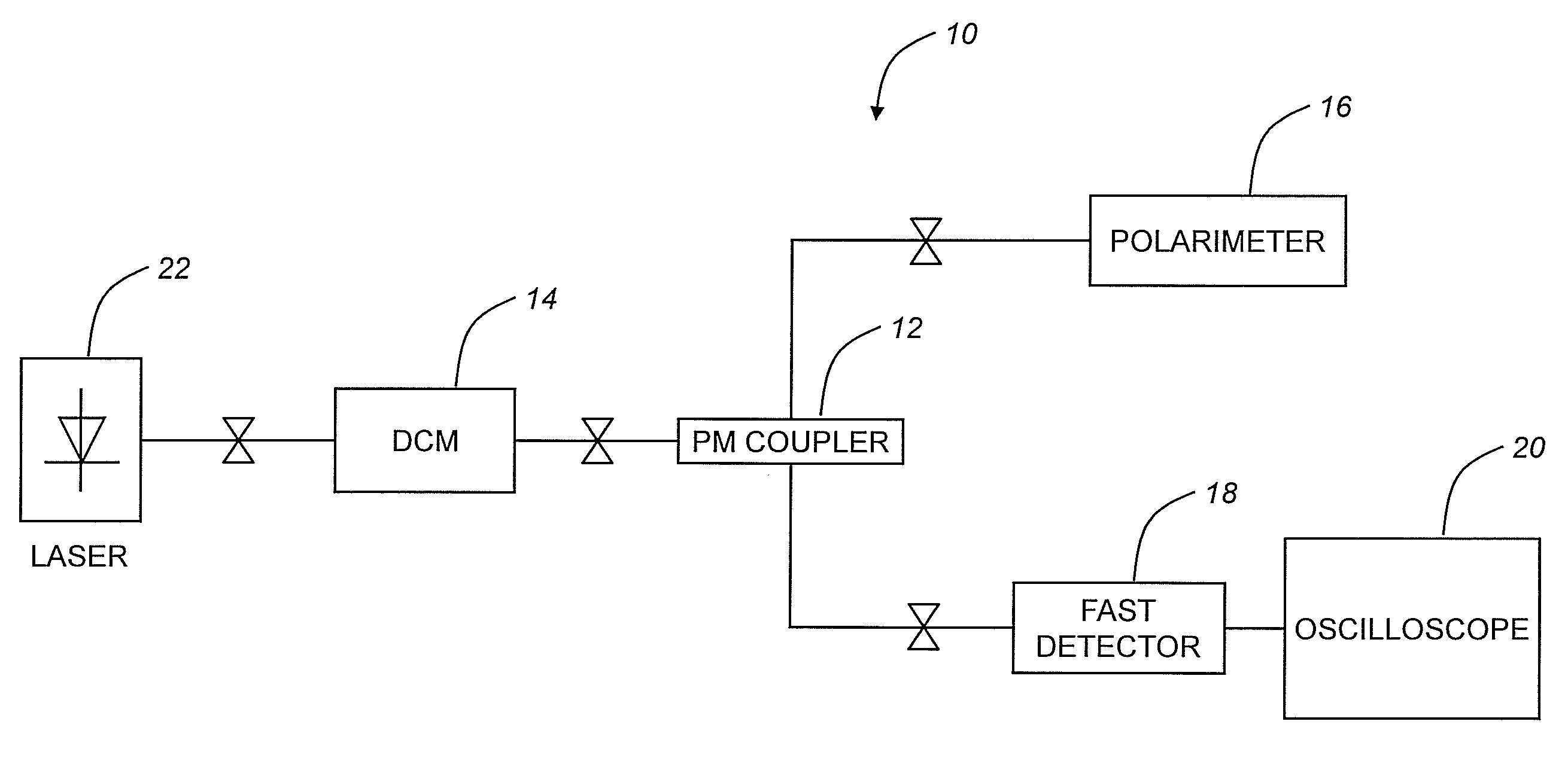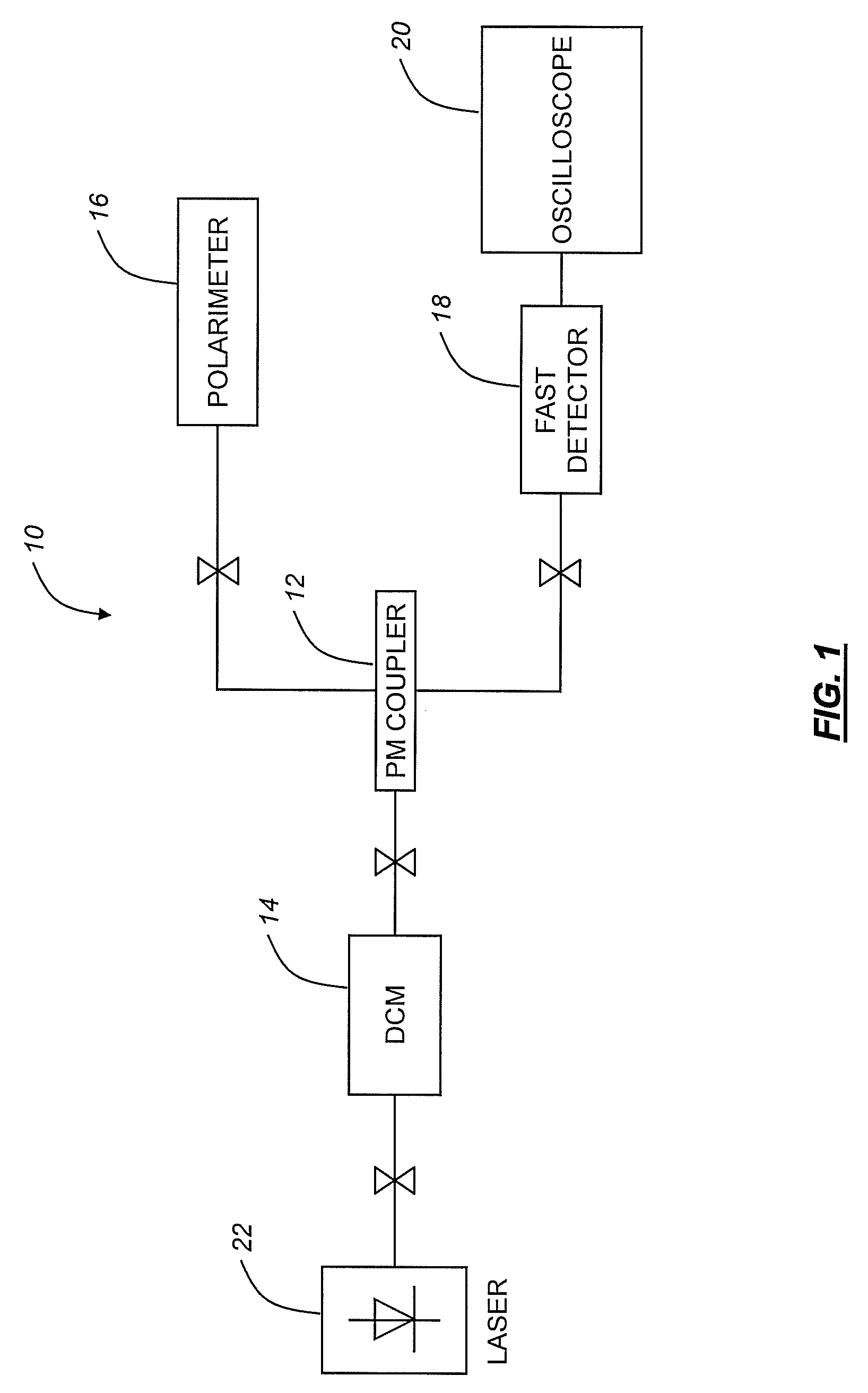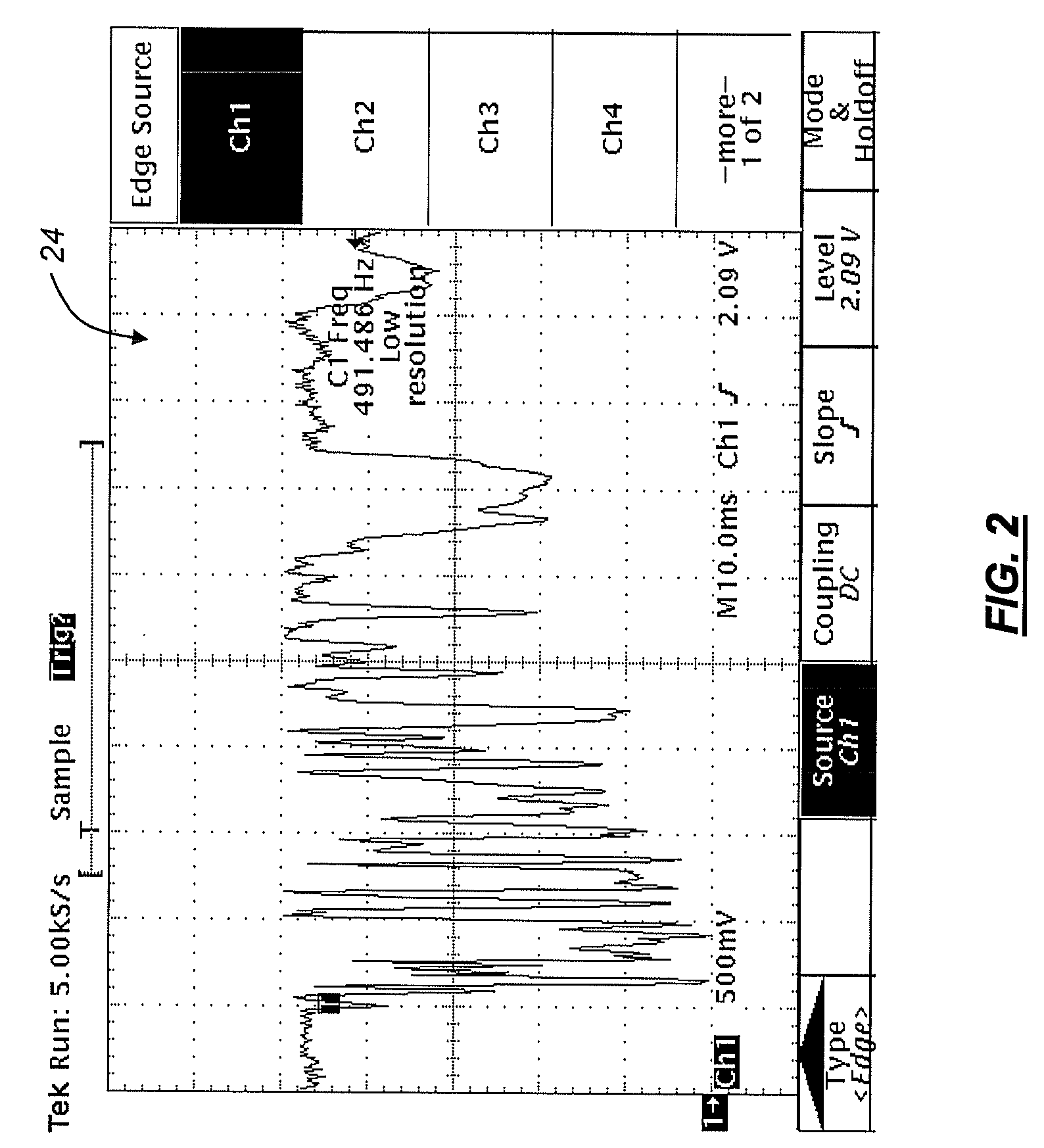Methods and systems for eliminating deleterious polarization effects in an optical fiber dispersion compensation module
a technology of optical fiber and dispersion compensation, applied in the field of optical communication networks, can solve the problems of limited transmission data rate for a given link length, all conventional optical fiber dcms suffer from lack of polarization control, etc., and achieve the effects of reducing polarization change, reducing polarization change, and reducing polarization chang
- Summary
- Abstract
- Description
- Claims
- Application Information
AI Technical Summary
Benefits of technology
Problems solved by technology
Method used
Image
Examples
Embodiment Construction
[0017]As described above, the current state of the art in dispersion compensation is based on introducing optical fiber DCMs along the optical path and at the optical links. Although some attempts are being made to use different technologies (e.g. optical fiber Bragg gratings, etalons, etc.), most routes now use optical fiber DCMs. Given the length of DCF required for compensation, these modules are especially susceptible to shock, which translates into changes in the polarization state of the output beam. Typically, these changes can be quite fast, and difficult to track and correct for with a PMDC or the like. Similar problems can be encountered in optical fiber transmission systems using polarization multiplexing (Pol-Mux), in the case where a polarization controller (PC) and polarization tracker are used to demultiplex two polarized signals.
[0018]Preliminary measurements have shown that the rate of polarization change with shock acceleration points to DCMs as a major problem for...
PUM
 Login to View More
Login to View More Abstract
Description
Claims
Application Information
 Login to View More
Login to View More - R&D
- Intellectual Property
- Life Sciences
- Materials
- Tech Scout
- Unparalleled Data Quality
- Higher Quality Content
- 60% Fewer Hallucinations
Browse by: Latest US Patents, China's latest patents, Technical Efficacy Thesaurus, Application Domain, Technology Topic, Popular Technical Reports.
© 2025 PatSnap. All rights reserved.Legal|Privacy policy|Modern Slavery Act Transparency Statement|Sitemap|About US| Contact US: help@patsnap.com



